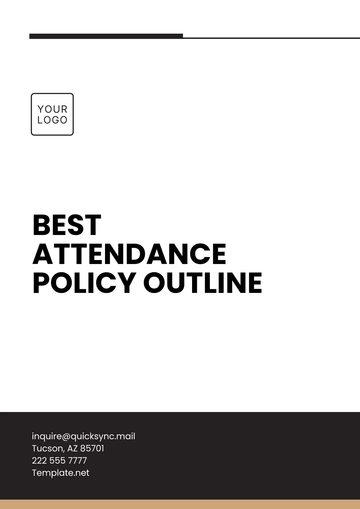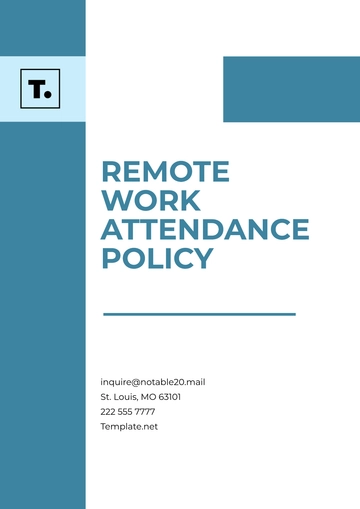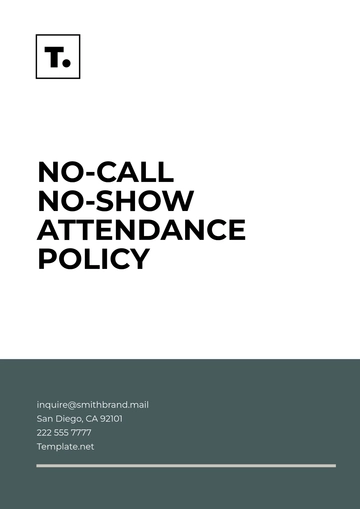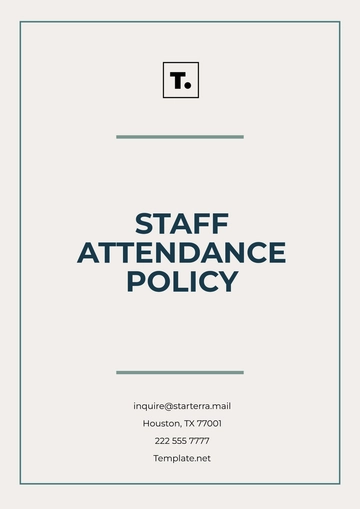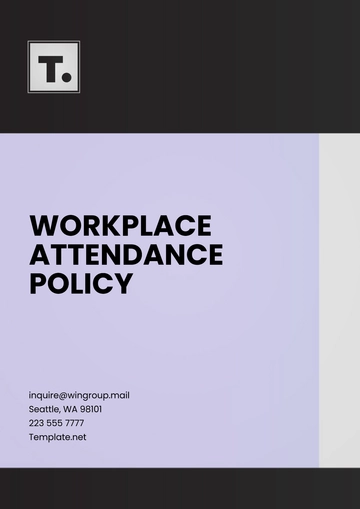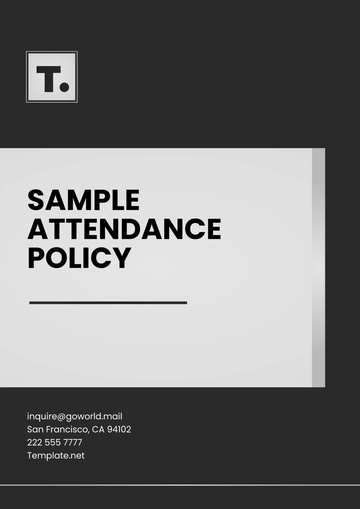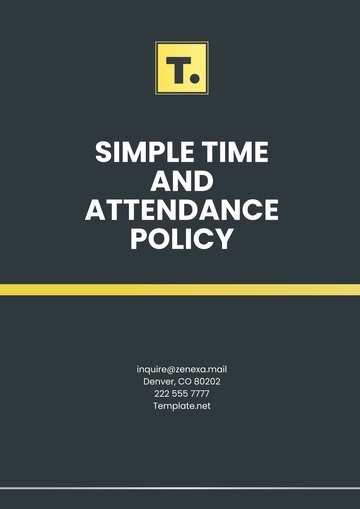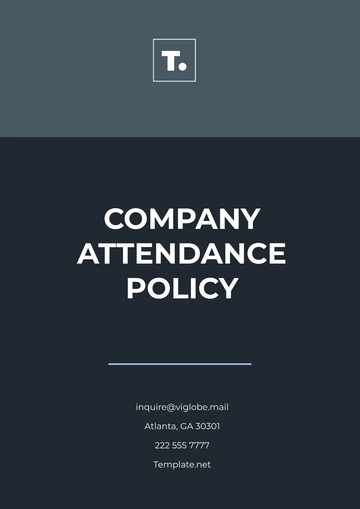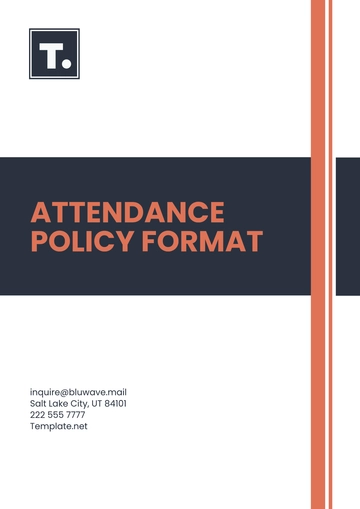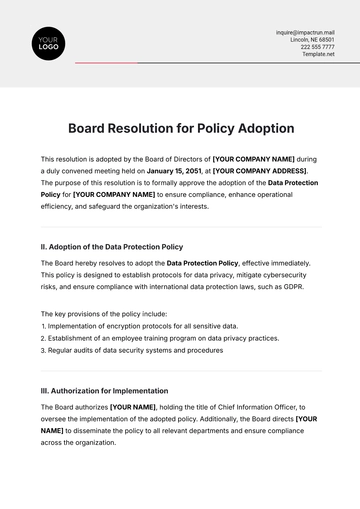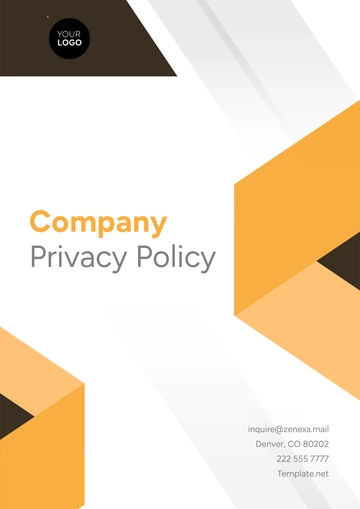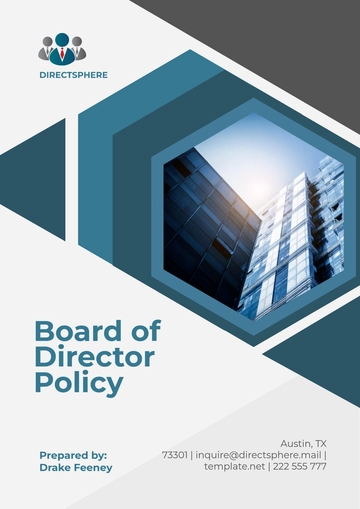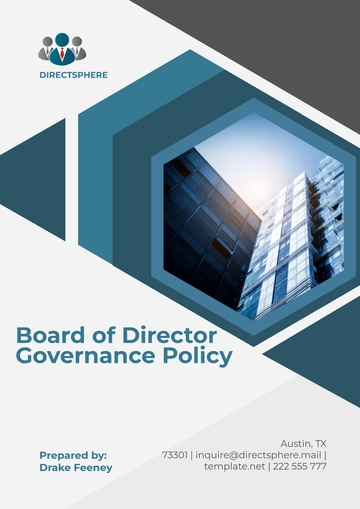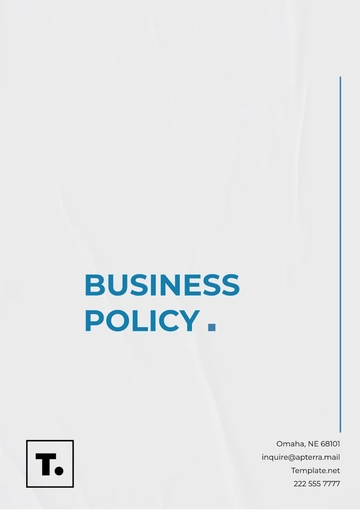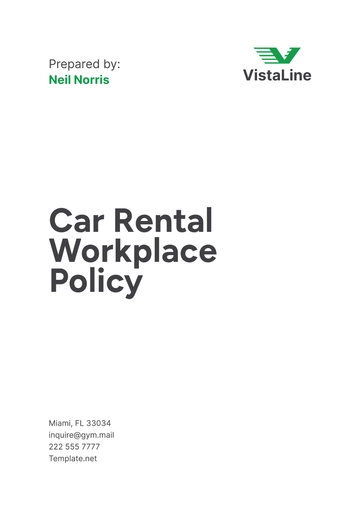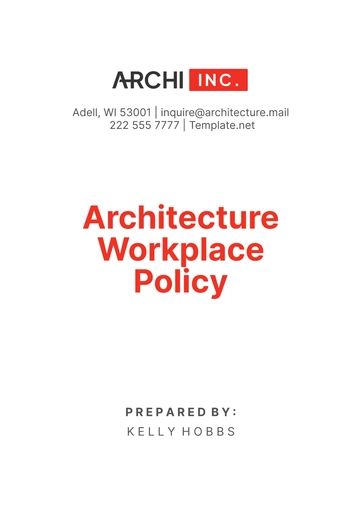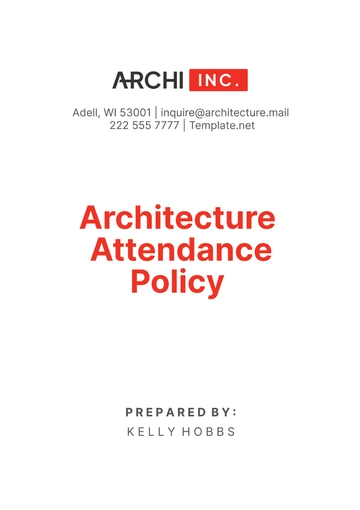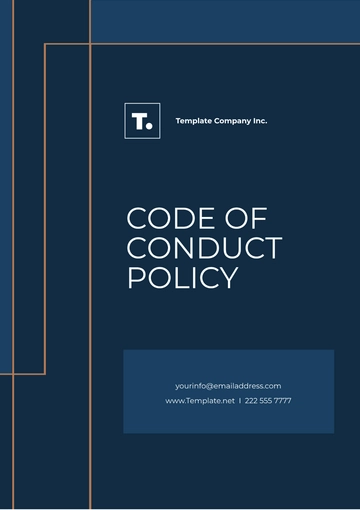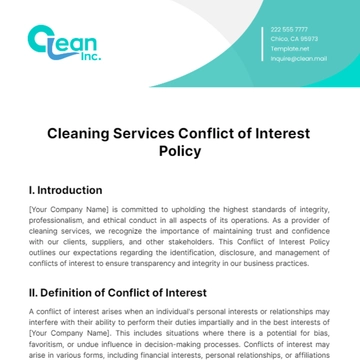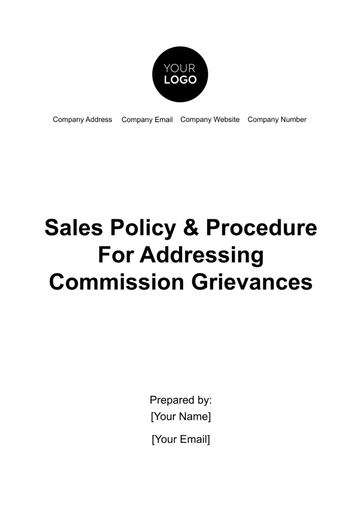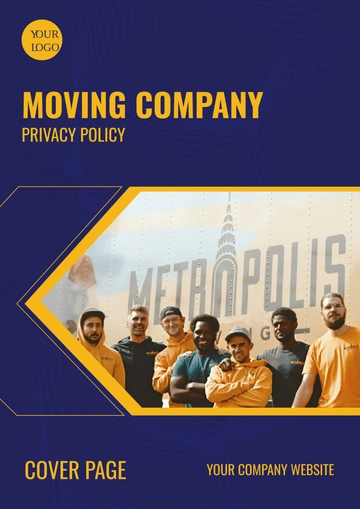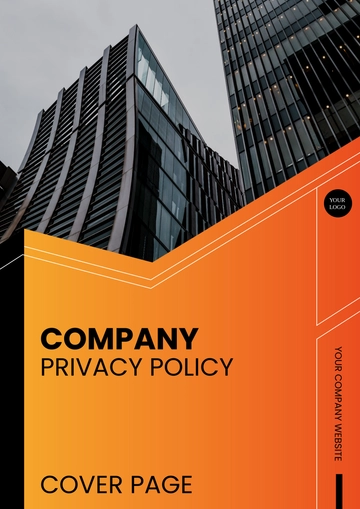Free Marketing Media Relations Policy & Procedure
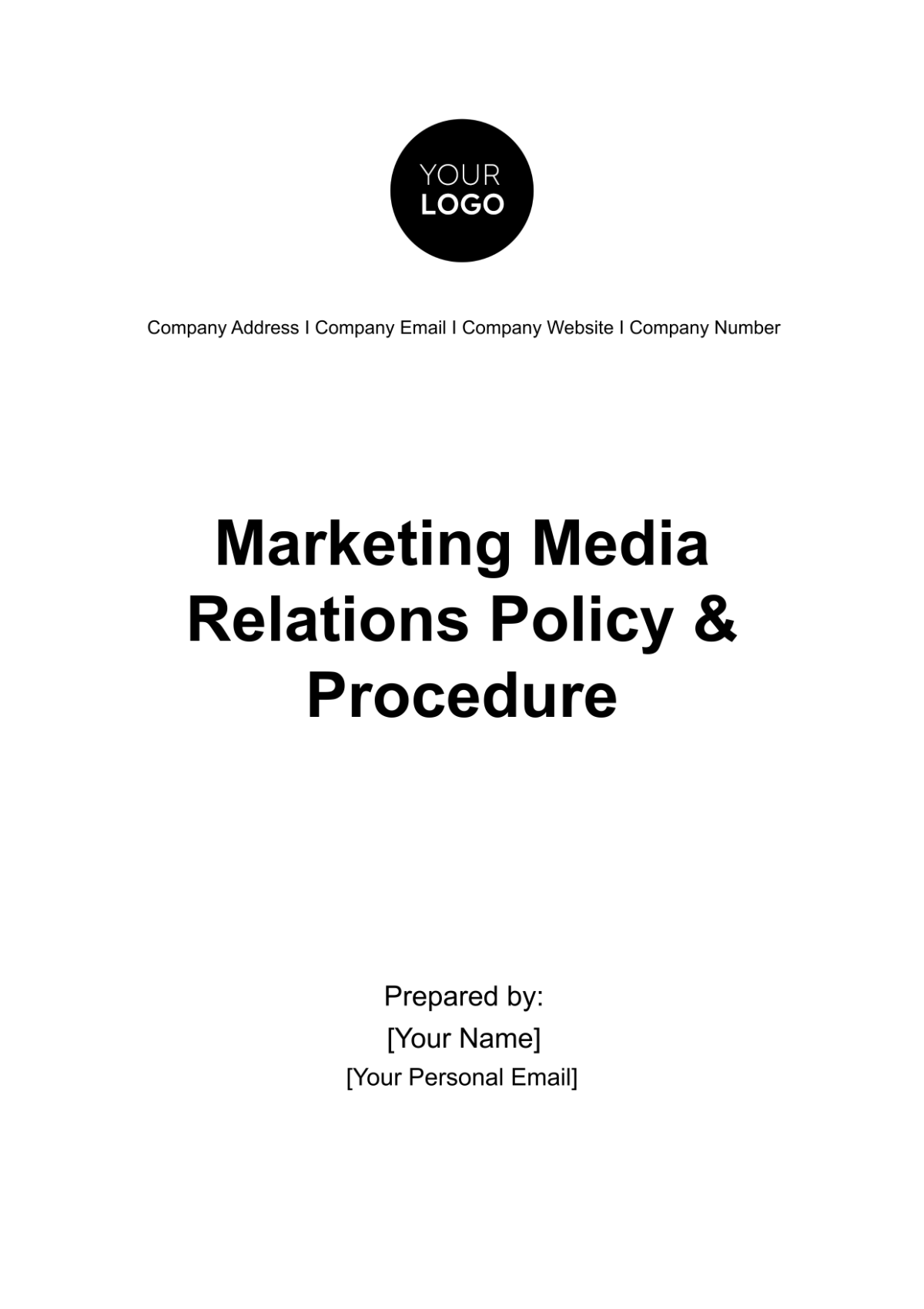
Policy & Procedure
1. Introduction
The purpose of this Marketing Media Relations Policy & Procedure document is to establish a standardized approach to [Your Company Name]'s dealings with all forms of media. Whether dealing with print, broadcast, or online platforms, this document serves as an exhaustive manual that dictates how employees and representatives of [Your Company Name] should conduct themselves to ensure a uniform and positive portrayal of the brand. It contains protocols, specific procedural guidelines, and a set of best practices designed to shape our media interactions.
In the era of instant news and viral social media posts, maintaining a consistent and positive brand image in the public sphere has never been more crucial. A single media blunder can significantly affect a company's reputation. Therefore, adherence to the guidelines laid out in this document is imperative for avoiding misunderstandings, mitigating negative publicity, and fostering a media-friendly environment that can benefit the company in the long run. This document aims to provide clarity, eliminate ambiguity, and serve as a point of reference for all internal stakeholders involved in media relations. It is a key tool for safeguarding and enhancing [Your Company Name]'s public image and should be read and understood by all relevant personnel.
2. Objectives
The objectives set the foundational goals that guide the entire scope of this Media Relations Policy & Procedure document. It outlines what we aim to achieve in our interactions with the media and how we intend to maintain brand integrity and public image throughout.
To ensure consistency in messaging across all media channels. One of the key objectives of this document is to establish a uniform voice and messaging strategy across all media channels, be it traditional media outlets, social media, or internal communications. Consistency in messaging not only reinforces the brand identity but also eliminates the risk of conflicting or confusing information being circulated. A consistent message strengthens brand recall and builds credibility among stakeholders, both internal and external.
To build and maintain a positive reputation for [Your Company Name]. Another vital objective is the building and maintenance of a positive brand image for [Your Company Name]. A positive reputation is one of the most valuable assets a company can have. To this end, this document offers guidelines on how to engage with media in a manner that projects [Your Company Name] as a leader in its field, socially responsible, and customer-centric.
To facilitate prompt and accurate dissemination of information. Timeliness and accuracy in disseminating information are crucial in today’s fast-paced media environment. The objective here is to ensure that all information released to the media is not only accurate but also delivered promptly. Quick, transparent, and accurate communication can often be the difference between a well-handled situation and a public relations disaster. This document provides a framework for coordinating rapid and precise communication through designated channels and spokespersons.
3. Scope
This Marketing Media Relations Policy & Procedure document extends to all individuals who are directly or indirectly associated with [Your Company Name] and are involved in interactions with the media. This includes full-time employees, part-time staff, contractors, freelancers, and third-party representatives or agencies acting on behalf of the company. The scope covers a wide array of media interactions, ranging from interviews, press releases, and statements to social media engagements, blog posts, and internal newsletters that may be accessed publicly.
The aim is to ensure a cohesive, unified approach to media relations irrespective of the level of seniority or department of the involved personnel. Whether you are a C-level executive or a junior team member, the principles outlined in this document apply uniformly and are designed to guide your conduct during any media interaction.
Beyond traditional media outlets such as print, television, and radio, this policy also encompasses digital platforms including social media channels, forums, and any other public platforms where [Your Company Name] could be discussed or represented. It further extends to indirect communication methods, like responses to customer reviews or public comments, which can also shape the brand's public perception.
By defining such an all-encompassing scope, this policy aims to leave no room for ambiguity, ensuring that all stakeholders are well-versed in how to optimally represent [Your Company Name] in the media landscape.
4. Responsibilities
The chapter on Responsibilities serves to clearly define the roles and accountabilities of various individuals and teams within [Your Company Name] when it comes to interacting with and managing media relations. The aim is to allocate specific duties to each role to ensure a seamless, coordinated approach to all media-related activities. This structured allocation of responsibilities is crucial for maintaining a consistent brand image, effectively disseminating information, and adeptly handling any media inquiries or crises that may arise. Below, we outline the roles and their corresponding responsibilities in the realm of media relations.
Role | Responsibilities |
Marketing Director | Overall management of media relations |
Public Relations Manager | Handling media inquiries, issuing press releases |
Social Media Team | Monitoring online brand mentions, managing social media crises |
5. Media Relations Procedures
The following chapter details the standard operating procedures that [Your Company Name] must follow when engaging with the media. These procedures are put in place to ensure that all media interactions are handled in a manner consistent with the company's brand values, public image, and strategic objectives. They serve as a guide for employees at different levels of the organization who might find themselves in situations that require media communication. The table below outlines the specific procedures related to various aspects of media relations.
6. Crisis Communication
Crisis situations can be highly volatile and detrimental to a company's reputation if not managed correctly. This chapter aims to outline [Your Company Name]'s protocols for effective crisis communication. The Crisis Communication Team will be responsible for steering the communication strategy during any such event to ensure that the situation is managed as transparently and adeptly as possible. This involves disseminating timely, consistent, and accurate information to the media, while also being prepared to escalate communication efforts based on the severity of the crisis. Below is a table that further defines the levels of crisis severity, the corresponding actions to be taken, and the contact person responsible for those actions.
Crisis Level | Action | Contact | Additional Notes |
High | Immediate press conference | [Contact] | A high-level crisis could involve matters like major data breaches or events that could severely impact the company's reputation. A rapid response is essential. |
Medium | Press release within 24 hours | [Contact] | Medium-level crises may involve issues that could impact the company's reputation but are not immediately damaging. A press release should be issued within 24 hours. |
Low | Official statement on company website | [Contact] | Low-level crises might include minor operational hiccups that require public clarification. An official statement on the company website is usually sufficient. |
Ongoing Monitoring | Monitor social media and news channels for public sentiment | [Contact] | Regardless of the crisis level, ongoing monitoring is crucial for understanding public sentiment and preparing for potential follow-up actions. |
7. Monitoring and Review
Effective media relations is not a one-off task but a continual effort that requires regular monitoring and periodic reviews. In order to maintain high standards and continually refine our approach, [Your Company Name]'s Marketing Director will conduct a quarterly review focused on various Key Performance Indicators (KPIs). This systematic evaluation aims to ensure that our media relations activities are not only meeting but exceeding established benchmarks for success.
Two of the primary KPIs under scrutiny will be the quality of media coverage and the response time to media inquiries. The quality of media coverage will be assessed based on a variety of factors, including but not limited to, the accuracy of the information disseminated, the tone of the coverage, and its alignment with [Your Company Name]'s brand values. This qualitative assessment will be supplemented by quantitative measures, such as the reach and impact of the media coverage, to provide a holistic understanding of our media relations efforts.
The response time to media inquiries is another critical KPI. Timely interactions with the media can significantly affect the narrative surrounding [Your Company Name]. Thus, the aim will be to assess how quickly and effectively our Public Relations Manager and other responsible personnel respond to media queries, whether they are routine or crisis-driven.
Furthermore, the review process will also include a summary of any crisis events that occurred during the quarter, evaluating the effectiveness of the crisis communication strategy that was employed. Feedback from media contacts will be solicited when applicable, and lessons learned will be documented to improve future media relations strategies.
By conducting these quarterly reviews, [Your Company Name] aims to maintain an agile and responsive media relations posture that can adapt to the ever-changing media landscape. The ultimate goal is to continually build and maintain a positive brand image while ensuring that all communications are consistent, accurate, and timely.
8. Conclusion
In conclusion, adherence to the guidelines and protocols outlined in this Marketing Media Relations Policy & Procedure is not just recommended but mandatory for all personnel who engage in any form of interaction with the media. This document serves as the cornerstone of [Your Company Name]'s media relations strategy, aiming to uphold a consistent and positive public image while mitigating risks associated with media interactions. Failure to comply with these procedures can not only affect [Your Company Name]'s reputation but may also lead to legal complications and adverse impacts on the brand. Consequently, any infractions may result in disciplinary action ranging from internal reviews to more severe measures as deemed necessary. By observing these guidelines, all team members contribute to a cohesive and effective media strategy that aligns with [Your Company Name]'s broader organizational objectives.
Acknowledgment
I, [Employee Name], acknowledge that I have read and understood [Your Company Name]'s Marketing Media Relations Policy & Procedure.
________________
[Employee Signature]
[Date]
_____________________________________________________________________________________
This document is subject to change and may be updated at the discretion of [Your Company Name]'s management.
- 100% Customizable, free editor
- Access 1 Million+ Templates, photo’s & graphics
- Download or share as a template
- Click and replace photos, graphics, text, backgrounds
- Resize, crop, AI write & more
- Access advanced editor
Unlock the power of effective media relations with Template.net's Marketing Media Relations Policy & Procedure Template. This fully editable and customizable resource allows seamless adaptation to your organization's needs. Crafted for ease, it's editable in our AI Editor Tool, ensuring tailored strategies for impeccable media management.
You may also like
- HR Policy
- Restaurant Policy
- Company Policy
- Accounting Policies and Procedures
- Website Policy
- Privacy Policy
- Safety Policy
- School Policy
- IT and Software Policy
- Law Firm Policy
- Construction Policy
- Interior Design Policy
- Travel Agency Policy
- Education Academic Policy
- Security Policy
- Real Estate Policy
- Expense Policy
- Software Policy
